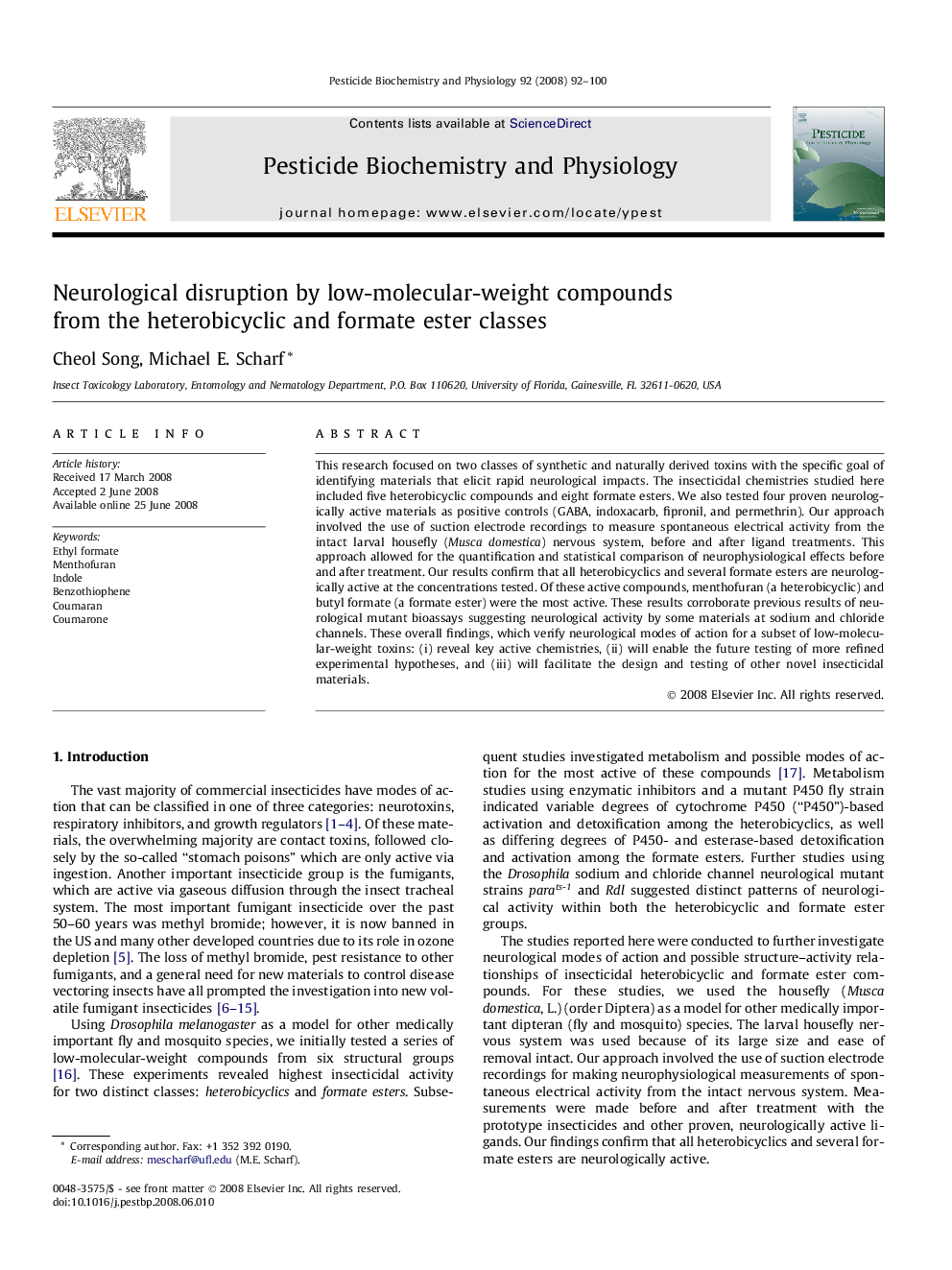| Article ID | Journal | Published Year | Pages | File Type |
|---|---|---|---|---|
| 2009929 | Pesticide Biochemistry and Physiology | 2008 | 9 Pages |
Abstract
This research focused on two classes of synthetic and naturally derived toxins with the specific goal of identifying materials that elicit rapid neurological impacts. The insecticidal chemistries studied here included five heterobicyclic compounds and eight formate esters. We also tested four proven neurologically active materials as positive controls (GABA, indoxacarb, fipronil, and permethrin). Our approach involved the use of suction electrode recordings to measure spontaneous electrical activity from the intact larval housefly (Musca domestica) nervous system, before and after ligand treatments. This approach allowed for the quantification and statistical comparison of neurophysiological effects before and after treatment. Our results confirm that all heterobicyclics and several formate esters are neurologically active at the concentrations tested. Of these active compounds, menthofuran (a heterobicyclic) and butyl formate (a formate ester) were the most active. These results corroborate previous results of neurological mutant bioassays suggesting neurological activity by some materials at sodium and chloride channels. These overall findings, which verify neurological modes of action for a subset of low-molecular-weight toxins: (i) reveal key active chemistries, (ii) will enable the future testing of more refined experimental hypotheses, and (iii) will facilitate the design and testing of other novel insecticidal materials.
Related Topics
Life Sciences
Agricultural and Biological Sciences
Agronomy and Crop Science
Authors
Cheol Song, Michael E. Scharf,
